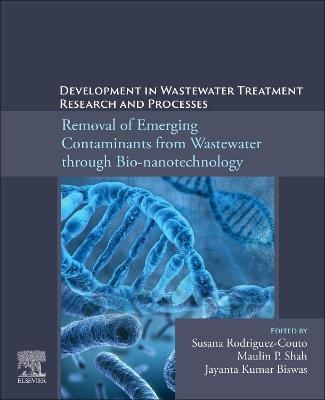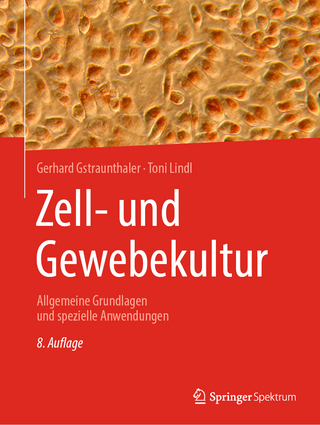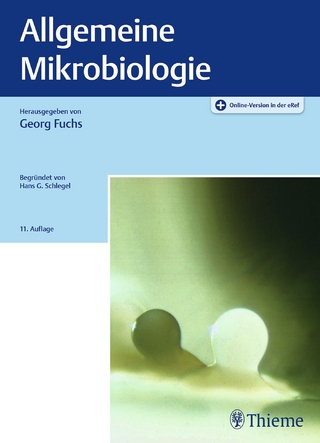
Development in Wastewater Treatment Research and Processes
Elsevier - Health Sciences Division (Verlag)
978-0-323-85583-9 (ISBN)
This book focuses on the exploitation of Nano-biotechnology inclusive of the state-of-the-art remediate strategies to degrade/detoxify/stabilize toxic and hazardous contaminants and restore contaminated sites, which is not as comprehensively discussed in the existing titles on similar topics available in the global market. In addition, it discusses the potential environmental and health hazards and ecotoxicity associated with the widespread distribution of emerging contaminants in the water bodies. It also considers the life cycle assessment (LCA) of emerging (micro)-pollutants with suitable case studies from various industrial sources.
Susana Rodríguez-Couto (female) got her B.Sc. and M.Sc. in Chemistry (Industrial Chemistry) from the University of Santiago de Compostela in 1992 and her Ph.D. in Chemistry in 1999 from the University of Vigo, obtaining the maximal grade (magna cum laude) and, in addition, she was awarded with the Extraordinary Prize for Doctoral Thesis in Chemistry. She worked as an Associate Professor and an Isidro Parga Pondal Senior Researcher at the University of Vigo (2000-2004), as a Ramón y Cajal Senior Researcher at Rovira i Virgili University (2004-2008) and as an Ikerbasque Research Professor (2009-2019). She has also worked as an Invited Researcher at the Institute from Environmental Biotechnology, Graz University of Technology (Austria) and at the Department of Biological Engineering, University of Minho (Portugal). In 2008, she received the I3 Professor from the Spanish Ministry of Science and Education to the recognition of an outstanding research activity. In March 2021 she is joining LUT School of Engineering Science at Mikkeli, Finland, as a Full Professor in biological water treatment. She has published more than 140 articles in highly reputed international journals (h index 42). She is editor of several journals (3Biotech, Frontiers) and 14 Elsevier books. Dr. Maulin P. Shah is an active researcher and microbial biotechnologist with diverse research interest. His primary interest is the environment, the quality of our living resources and the ways that bacteria can help to manage and degrade toxic wastes and restore environmental health. Consequently, His work has been focused to assess the impact of industrial pollution on microbial diversity of wastewater following cultivation dependant and cultivation independent analysis. Prof. (Dr.) Jayanta Kumar Biswas is a Professor at Department of Ecological Studies and International Centre for Ecological Engineering, University of Kalyani, West Bengal, India. He obtained M.Sc. in Zoology, M.Phil. in Ecology and Ph.D. for his work on Eco technological management of aquatic systems. His spectrum of research interest and expertise span the following focal areas: ecotoxicology and bioremediation of toxic metal(loid)s; ecological engineering and eco technological remediation of water and soil contaminants; environmental microbiology; Nano biotechnology; dynamics of nutrients and toxic contaminants in water and soil; bio regenerative reclamation of wastewater. A consistent rank holder all through his academic career Professor Biswas received many scholarships, awards and fellowships including Fellow, West Bengal Academy of Science and Technology (FAScT), Fellow, National Environmentalists Association (FNEA), Zoological Society of India (FZSI), Zoological Society, Kolkata (FZS), Senior Scientist Award & Gold Medal (ZSI), Best Research Paper Award (AESA), Outstanding Reviewer Award (Chemosphere (Elsevier) & Environmental Geochemistry and Health (Springer); SRF (ICAR); National Merit Scholarship (MHRD, GoI), etc. He is credited with publishing 130 research papers in international and national journals. He is serving as editorial board member of several international journals of repute, namely Science of the Total Environment (Elsevier); Environmental Geochemistry and Health (Springer); Current Pollution Reports (Springer); Energy & Environment (SAGE). He visited several countries with government travel fellowships, to present research papers and chair scientific sessions in International conferences.
1. Nanoadsorbents for scavenging emerging contaminants from wastewater
2. Treatment aspect of an emerging pollutant from Pharmaceutical industries using advanced oxidation process: past, current, and future trends
3. Membrane bioreactor (MBR) as an advanced wastewater treatment technology for removal of synthetic microplastics
4. Strategies to cope with the emerging waste water contaminants through adsorption regimes
5. Performances of membrane bioreactor technology for treating domestic wastewater operated at different sludge retention time
6. Advances in nanotechnologies of waste water treatment: strategies and emerging opportunities
7. Water and wastewater treatment through ozone-based technologies
8. Constructed wetland: a promising technology for the treatment of hazardous textile dyes and effluent
9. Biogenic nanomaterials: synthesis, characteristics, and recent trends in combating hazardous pollutants (an arising scientific horizon)
10. Removal of emerging contaminants from pharmaceutical wastewater through application of bionanotechnology
11. Recent advances in pesticides removal using agroindustry based biochar
12. Bioremediation – the natural solution
13. Detection and removal of pathogenic bacteria from wastewater using various nanoparticles
14. Application of TiO2 photocatalysts hybridized with carbonaceous for degradation of pharmaceuticals
15. Moving bed biofilm reactor- (MBBR-) based advanced wastewater treatment technology for the removal of emerging contaminants
16. An application of bionanotechnology in removal of emerging contaminants from pharmaceutical waste
17. Removal of emerging contaminants in water Treatment by an application of nanofiltration and reverse psmosis
18. Membrane bioreactor (MBR) as an advanced wastewater treatment technology
19. Removal of pesticides from water and wastewater by solar-driven photocatalysis
20. Recent applications, reaction mechanism, and future perspective of hybrid ozonation process for water and wastewater treatment
21. Removal of emerging contaminants from pharmaceutical waste through application of bio nanotechnology
22. Antimicrobial activities of different nanoparticles concerning to wastewater treatment
23. Application of nanomaterial in wastewater treatment: recent advances and future perspective
24. Photocatalytic removal of emerging contaminants in water and wastewater treatments: a review
25. Biologically synthesized nanoparticles for dye removal
26. Removal of emerging contaminants in water treatment by nanofiltration and reserve osmosis
27. Hybrid bioreactor in combination with ozone-based technologies for industrial wastewater treatment
28. Metal organic frameworks (MOFs) in aiding water purification from emerging and ionic contaminants
29. Removal of emerging contaminants from wastewater through bionanotechnology
| Erscheinungsdatum | 17.09.2021 |
|---|---|
| Verlagsort | Philadelphia |
| Sprache | englisch |
| Maße | 191 x 235 mm |
| Gewicht | 450 g |
| Themenwelt | Naturwissenschaften ► Biologie ► Mikrobiologie / Immunologie |
| Technik ► Umwelttechnik / Biotechnologie | |
| ISBN-10 | 0-323-85583-0 / 0323855830 |
| ISBN-13 | 978-0-323-85583-9 / 9780323855839 |
| Zustand | Neuware |
| Informationen gemäß Produktsicherheitsverordnung (GPSR) | |
| Haben Sie eine Frage zum Produkt? |
aus dem Bereich


